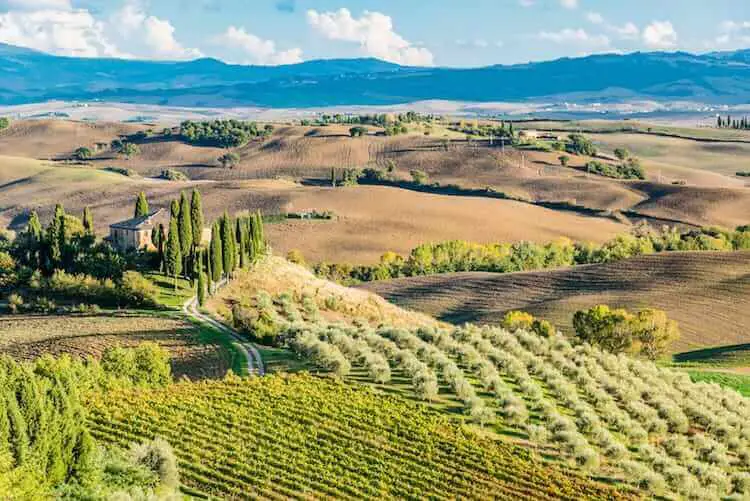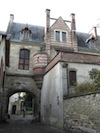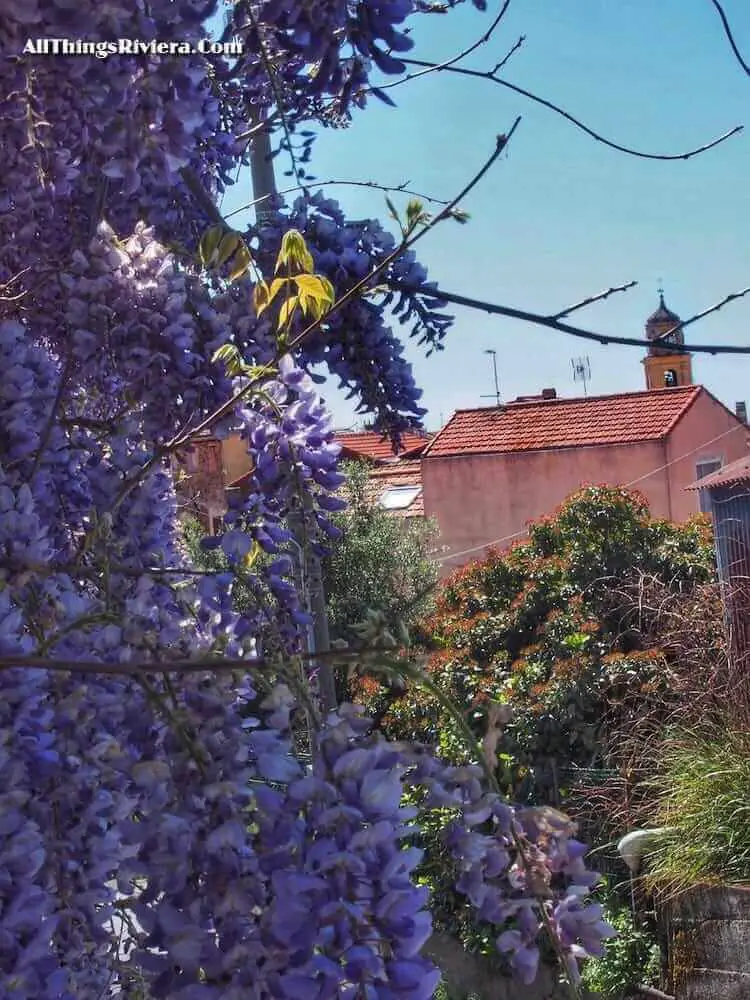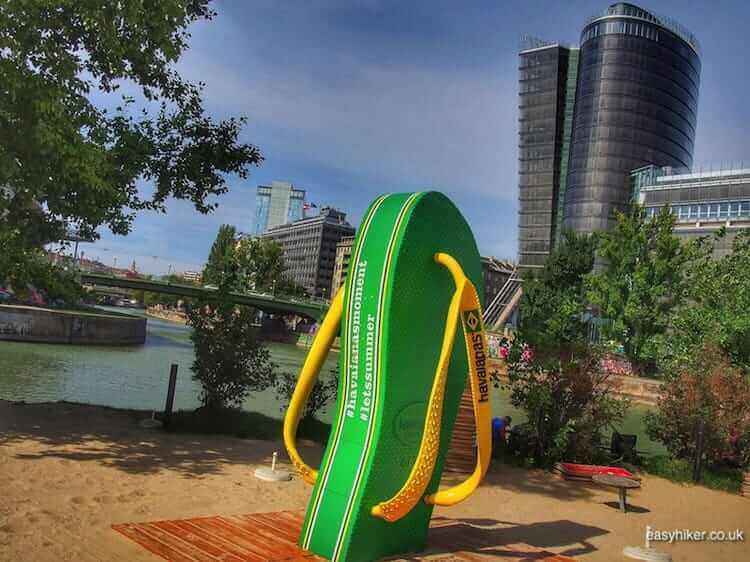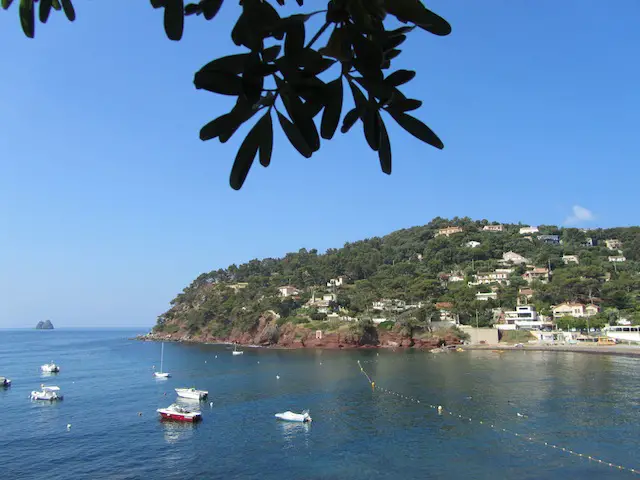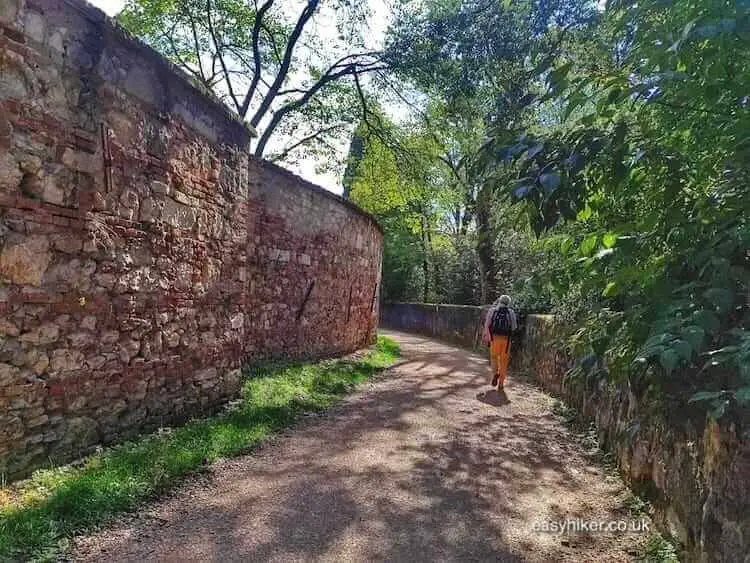If you like forest hikes that are attractive and at the same time not overly strenuous, I bet you will like this one. It has, after all, everything that an Easy Forest Hiker could possibly expect.
You will be entertained by glimpses of dense undergrowth that seem to come straight from the primeval woodlands of ancient northern Europe …

… while you are, most of the time, walking on broad alleys that make for a comfortable stroll …

… and if you need a little rest, you will find plenty of places where you can observe at leisure how all the elements of this forest scenery neatly fit together.

On top of that, the trail follows a river, which ensures that there is always something pleasant to look at a few meters away from you …

… and that you cannot lose your way. No need to go through complex orientation routines: just follow the flow!

For variety, you will – on the approach of the trail – get a fine impression of the scenic landscapes which are so typical for the northern European lowlands.

And as a bonus – since these landscapes can be rather heavy on the eye – the trails provides occasional relief in the form of traditional “rural countryside furniture”.

There is only one catch: the trail is located at some distance from the main European tourist routes, near a place called Handorf in Germany’s far northwest.
For Better or Follow the Werse
With a total length – from bus stop at the start to bus stop at the end – of roughly 5 kilometres, the walk to follow the Werse is perfectly suited for a half-day excursion from Münster or Warendorf, the two nearest towns.
The river that sets the course of the trail – called the Werse – may not be much more than a minor tributary of the Ems, but the landscape it has helped to shape is a prime example for the alluvial forests …

… which were once abundant in Northern and Central Europe.
Much like their tropical cousins, the rain forests, they provided habitats for an enormously wide range of plants and animal species, but most of them fell victim to the changes in human settlement patterns over the last two centuries.
More recently, much of the alluvial forest of the Werse was turned into a conservation area, but the damage has been done, and while the left bank of the trail has been largely preserved in (or restored to) its original state, the homes and second homes on the other bank sometimes are never far away, even if you can only half see them.

And since it is particularly difficult to isolate a nature protection area from external influences when human settlements are just a faint gust of wind away, garden species will inevitably intrude into the natural flora of the conservation zone.
This may also be the reason why, on the second stretch of the walk to follow the Werse (where there are more domestic gardens on the far side of the river), the colour red – rare in native forests – appears to be much more common than on the route’s first and wilder section.

Colours are another strong point of the walk. I can well imagine that a walk along the Werse is charming at any time of the year, but there can be no doubt that, if you are going for nature’s full symphony orchestra, autumn is the best time to visit.
Whatever your thoughts on the purity of the original flora may be: you will have to admit that the yellows and browns from the region’s traditional palette of the season …

… mix very well with the rich reds and purples, no matter where those may originally have came from.

If you want to see the Werse and its alluvial forest for yourself: take a train to Münster central station and then bus line no. 2 or 10 to a stop called Pleistermühlenweg, the name of a small country road which branches off the main highway a few metres away from the bus stop on your right. This will lead you straight to the trail.
At the end of the walk, you will find another busy highway and another bus stop (called Stapelskotten) from where you can return to the train station.
But here is a better idea: why not look for a walk just as exciting near the place where you live? Search out a body of water, a canal or a lake will also do, and map out a trail of roughly 2 hours in length, with public transport routes near-by (so you don’t have to walk back the same route).
Ideally, particularly if you are planning to take your loved ones along, combine the walk with a trip to town for some shopping or a meal. This is the stuff that happy family memories are made of!
But you must hurry up: the time is near when golden autumn mutates into its bleak wintery cousin. There is no time to lose.


